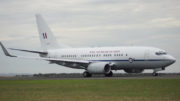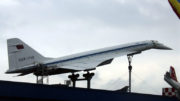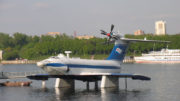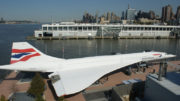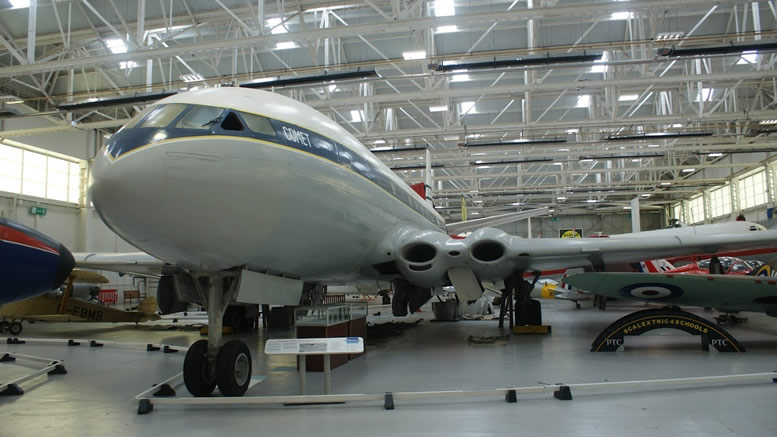
Nearing the end of World War II, the desire for passenger air travel increased dramatically. In the USA aircraft like the propeller driven Douglas DC-4 was a logical choice as they had a long history both in civilian and C-54 military forms, many surplus US C-54s were converted to civil aircraft and sold onto airlines around the world. Boeing also adapted their C-97 Stratofreighter into the Boeing 377 Stratocruiser, so for the US aircraft manufacturers it was mostly business as usual. In contrast, the British Aircraft manufacturers had been busy building aircraft that did not adapt easily to civilian roles, so the Brabazon committee was set up by the government nearing the end of the war to investigate the future of the empire’s aircraft needs. One of the proposals called for an advanced jet powered aircraft that we now know today as the world’s first passenger jet, the De Havilland Comet.
De Havilland stared working on development of the Comet soon after BOAC placed an order for the promising aircraft in December 1945. What De Havilland produced was one of the most futuristic and striking designs of an aircraft at the time. Powered by four in wing mounted de Havilland Ghost 50 Mk1 turbojet engines, the swept wing all aluminium airframe flew faster and higher than any other commercial aircraft at the time. After extensive development and testing, the comet entered service with BOAC in May 1952. Initially praised, the highly advanced Comet was loved by passengers for it comfort, quietness and pressurised cabin that experienced no vibration unlike propeller driven aircraft.
The public and airlines love of the plane soon began to sour after several high profile accidents early on in the Comet’s operational history. Two airframes were lost in late 1952 and early 1953 failed to become airborne while taking off, with the later resulting in the deaths of five crew and six passengers, which was the first ever fatal jetliner crash. The next 3 crashes were all attributed to structural failure in flight, which led to the comet’s grounding in early 1954.
At the time of the Comet grounding 21 aircraft had been produced, known as the Comet 1 and 1A, all these aircraft featured square shaped passenger windows that were eventually found to be part of the cause of the metal fatigue that led to the previous crashes. All of these aircraft were either scrapped or damaged during structural testing, with a few aircraft refitted to Comet 2 standard with oval windows and reinforcements across the fuselage along with crack arrestors.
Unfortunately for De Havilland, the early orders for the type were soon cancelled, as the testing stretched out until 1958 before the Comet could return to passenger service. At the time of grounding De Havilland was planning the 3ft longer Comet 2, this design upped the passenger numbers from 36 to 44 and fitted more powerful Rolls-Royce Avon engines along with other refinements. Due to the cancellation of orders by airlines, the majority of the Comet 2 aircraft only saw service with the RAF. A Type 3 version was developed but never sold, it evolved into the Type 4, which was the final major version of the Comet. The Comet 4 market the return to passenger service and was first delivered to BOAC in September 1958. By now, the Comet had grown by over 18ft in length and could seat up to 81 passengers. In all, 76 variants of the Type 4, 4B and 4C were produced until October 1959. By the time De Havilland had got the Comet back into service, Boeing and Douglas had caught up to De Havilland’s lead and had learned from the Comet’s errors. Airlines soon were ordering the Boeing 707 and Douglas DC-8 over the Comet, with both planes being more efficient, faster and larger than the Comet.
While not a sales success, the Comet did change the course of aviation history, just not for the benefit of De Havilland. By 1960, De Havilland was bought out by Hawker Siddeley, who developed one of the last Comet 4s into the Hawker Siddeley Nimrod for the RAF. The Nimrod remained in service with the RAF until its retirement in 2011. London based Dan-Air become the largest operator of Comets, buying up to 48 cheap second hand versions of the plane. These Comets were used as both spares and in service across the UK throughout the 1970s. Dan-Air’s last Comet flight in November 1980 marked the end of passenger service for the world’s first passenger jet.
By: Gary Watts

